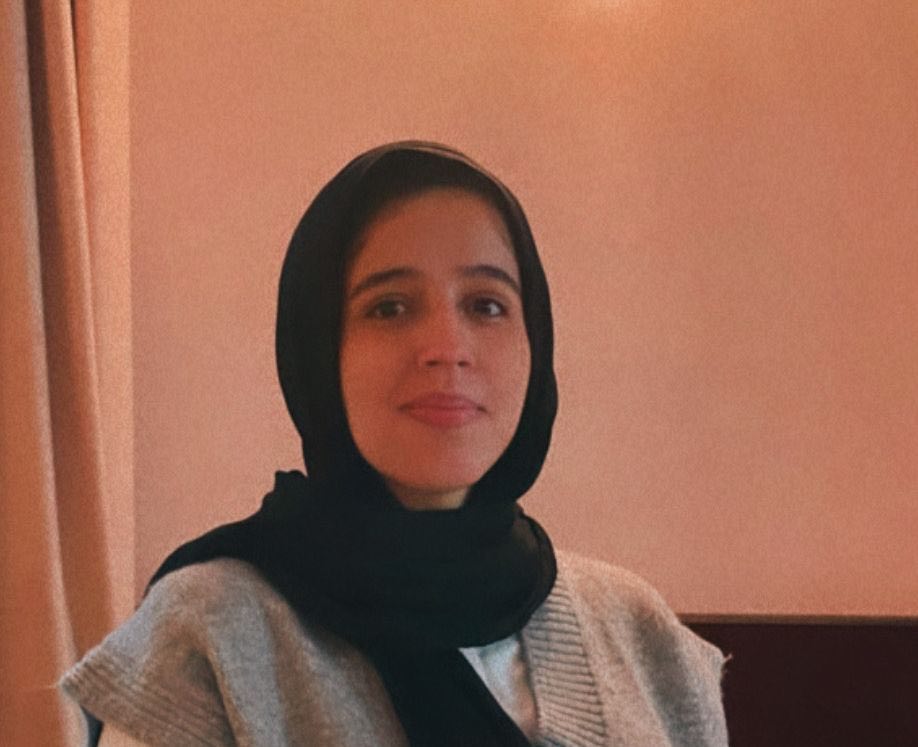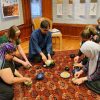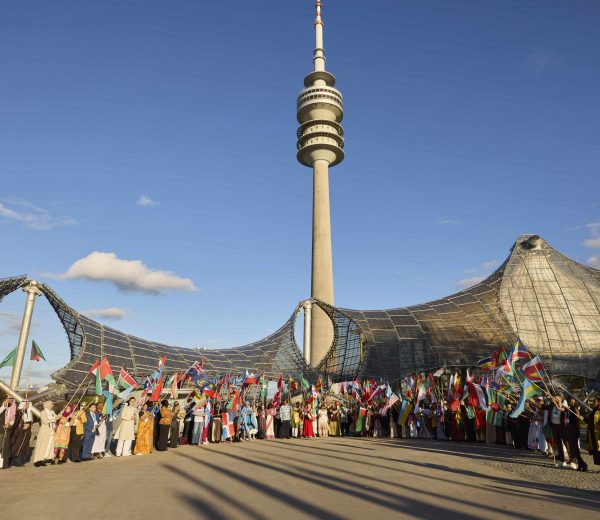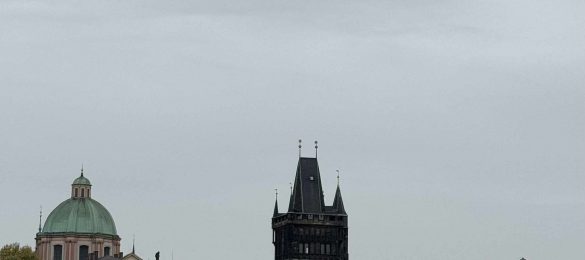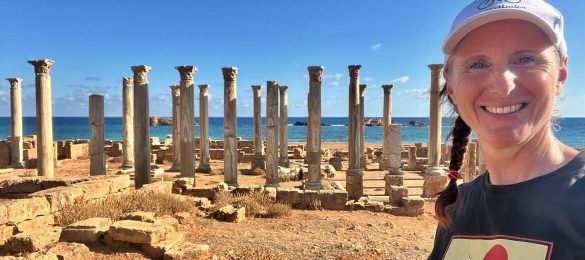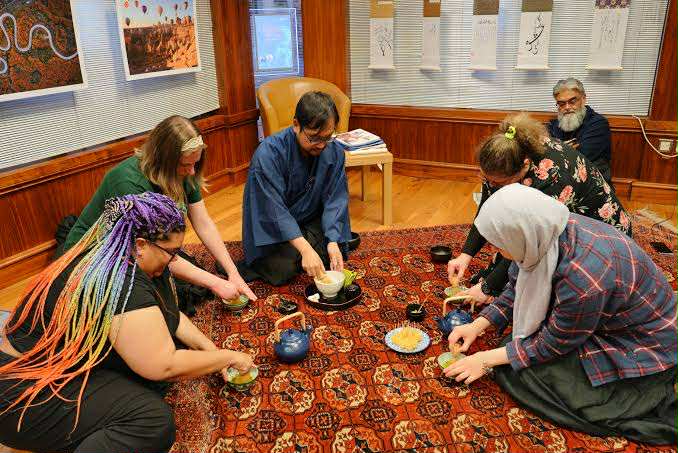
A couple of years ago, I came across a fascinating account on X of an artist called Naoki Yamamoto. It showcased the work of an artist who uses Japanese Calligraphy to weave threads of beauty about Islam. I knew that I wanted to talk to him and learn more about his interesting Journey. Earlier this year, I had the opportunity to interview the Japanese calligrapher and historian, Naoki Yamamoto. He is a professor based at Marmara University in Turkey, but art plays a considerable part in his spiritual and cultural journey. He is originally from Japan and converted to Islam around 17 years ago.
His artistic activity using calligraphy was ignited by the idea that many, since his conversion, had always asked the “why” question, but no one had asked the “how” one. To him, converting into Islam was the point where he began living. What truly matters, he insisted, is how one lives with Islamic values and expresses them culturally. This distinction became the catalyst for a groundbreaking artistic endeavor: the creation of a distinctly Japanese Islamic aesthetic. Conversion is viewed as an end in itself, rather than the beginning of a lifelong journey.
Through Yamamoto’s observations of Islamic cultures, especially in Central Asian communities, he noticed how these communities develop local Islamic expressions. For him, he wondered if the Muslim community in Japan would forge a similar localised spiritual aesthetic. When it comes to the Japanese Muslim community, it is not considered homogenous but is beautifully diverse; you find inter-racial components. In contrast to more post-modern communities in Japan, this diversity, he believes, could form the basis of a rich cultural ‘oasis.’
Islamic Details through Traditional Japanese Arts
Observing Naoki Yamamoto’s artwork through calligraphical expressions and reflections of Islam through Quranic verses and Surahs, Names of Allah, and other crucial components of Islam. You will observe not only a merely artistic interpretation, but it goes beyond to both poetic and philosophical. For him, his work supports sharing information about Islam and its beauty through his cultural and artistic activities. For instance, Yamamoto references traditional Japanese elements, such as the Kimono called Juban. The term is similar to the Arabic Jubbah worn by many in Arab communities in the MENA region. Some believe shares etymological roots with Arabic. Whether true or not, such narratives reflect long-standing cultural interweaving between Japan and Muslim societies.
“Culture doesn’t emerge spontaneously—it requires intention, vision, and continuous trial and error.”
Naoki Yamamoto
Yamamoto went beyond using calligraphy to share the beauty of Islam, but also explored other means, such as craftwork. For him, it is part of teaching or introducing the Japanese non-Islamic community to Islamic learnings and beautiful values. Especially since there is little information or effort provided to people, as the majority in Japan practice other religions. He collaborates with traditional Japanese artisans. It is to design Islamic-inspired crafts, such as traditional Japanese tea containers and wall scrolls inscribed with Arabic calligraphy. These are not mere decorative items; they are vessels of dialogue. These are meant to introduce Islamic ideas in a language that resonates with the Japanese soul.
The Japanese-Islamic Tea Ceremony Created by Naoki Yamamoto
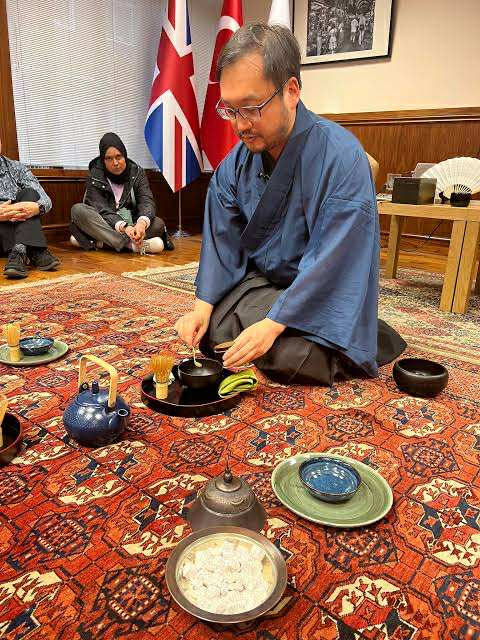
One of Naoki Yamamoto’s most innovative projects is the development of a Japanese-Islamic tea ceremony. Traditional tea ceremonies often feature scrolls with Zen or Confucian sayings. In Yamamoto’s version, he replaced these with Qur’anic verses or quotes from Islamic mystics, carefully explaining their meanings to attendees. By doing so, he used a deeply respected Japanese tradition as a platform for spiritual dialogue.
In 2023, he held what is considered the first Islamic tea ceremony in Japan. Over 70 people attended, including many non-Muslims, showing the potential for cultural exchange and coexistence. The tea ceremony became a space where Islamic teachings could be appreciated as both spiritual and artistic offerings.
The Birth of the Japanese-Islamic Script
Naoki Yamamoto put in the effort to understand and learn about the details of traditional Japanese calligraphy, in addition to those of Western and Islamic calligraphies. Through his experience, he found himself interested and fascinated by Chinese calligraphy. Through his observation, he was inspired by how Chinese Muslims blended Arabic script with Chinese aesthetics.
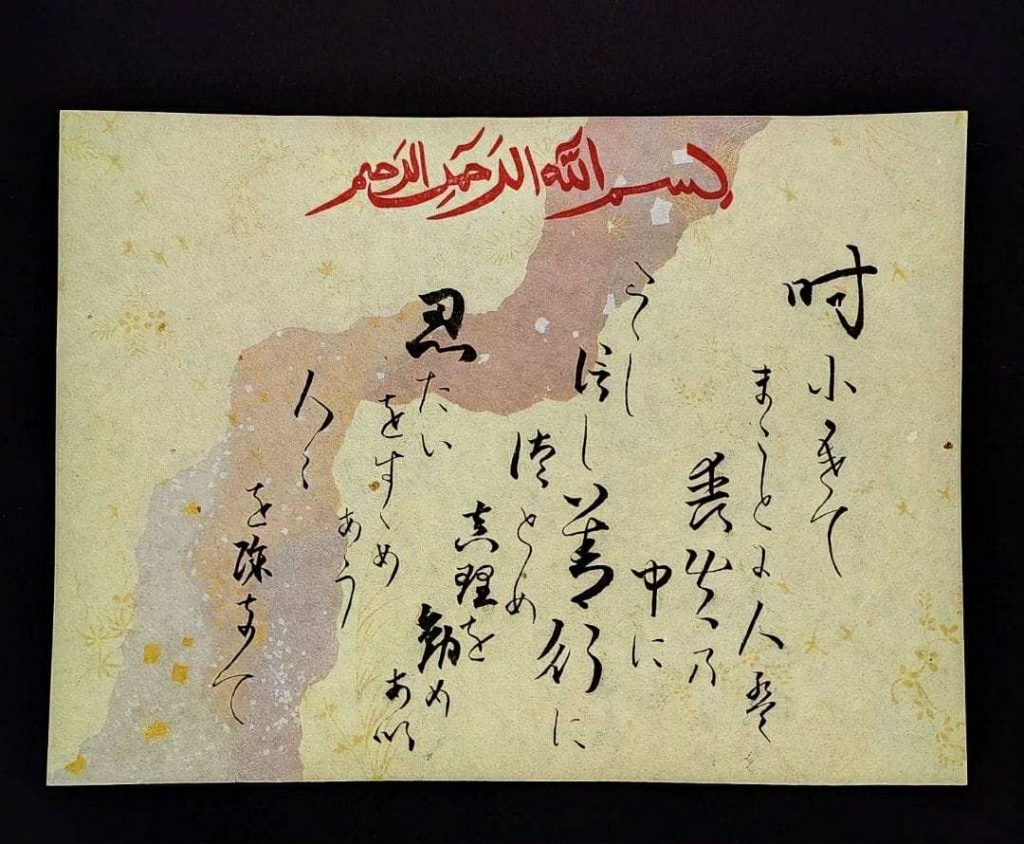
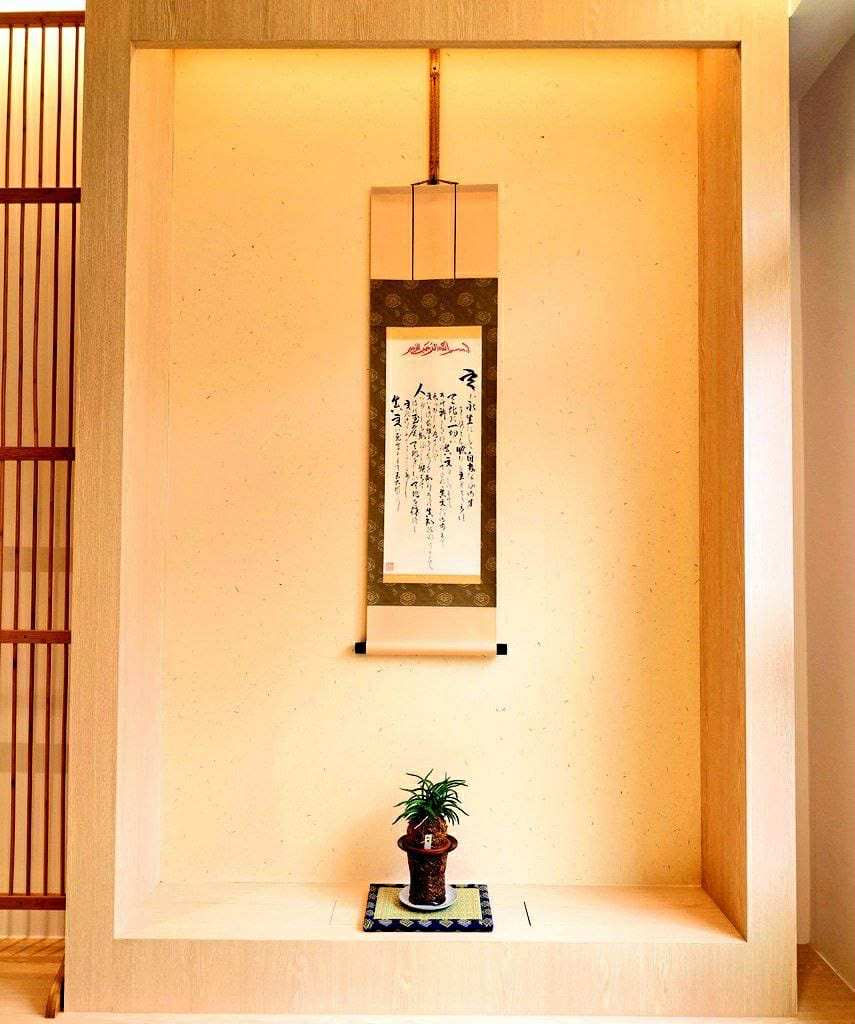
From that experience onwards, Yamamoto began developing and experimenting with his own script style. He calls it ”the Japanese-Islamic script.” He managed to combine Japanese artistic principles with Arabic calligraphy, offering a new, unique, and intellectual visual interpretation. While he is currently the sole practitioner, he hopes that future generations will take up this art form and expand it.
Anime and Storytelling: A New Frontier
In addition to calligraphy and artisan work, he is also venturing into anime. Through this, he is aiming to fill a representational gap in global media. During our discussion, he notes that while Muslims frequently consume anime, they rarely see themselves reflected in it. Regardless of numerous reflections in anime and also the wide consumption of it by Muslims, it is still not possible to see an authentic representation of Muslims in it. Moreover, when Muslim characters do appear, they are often misrepresented.
To counter this, Yamamoto is developing a fictional universe with Muslim protagonists—including strong hijabi characters—who are grounded in authentic Islamic teachings and histories. The goal is to create relatable and inspiring figures for young Muslim audiences, utilizing anime as a tool for cultural and religious education. While producing a full anime is a long-term ambition, he plans to begin with novels and manga.
Challenges and Community Support Opportunities
Despite the magnitude of his undertaking, Naoki Yamamoto expressed that he has faced a few obstacles. On the contrary, his work has garnered support from both Muslim and non-Muslim communities, specifically in Japan and Turkey. He acknowledges the ongoing challenge of creative innovation and funding, especially for ambitious projects like anime, but remains committed to his long-term vision.
Nonetheless, Yamamoto emphasizes the importance of tangible expressions of Islam. Rather than limiting religious engagement to texts, he believes in creating physical objects and shared experiences that convey spiritual values. Whether it’s a tea bowl, a wall hanging, or a fictional character, his creations serve as bridges, offering Islam not as a foreign import but as a source of shared beauty.
Through calligraphy, handicrafts, and anime, he is helping to pioneer a new cultural landscape where Japanese identity and Islamic values intersect. His work reminds us that Islam, as a universal religion, can find authentic expression in any cultural context; so long as it is approached with sincerity, creativity, and love. Naoki Yamamoto is not just building an art form; he is cultivating a legacy, one that future generations of Japanese Muslims can inherit and evolve in years to come.
You can follow his work through Instagram: @japaneseislamicateart and X: @NaokiQYamamoto to learn more about his work.
